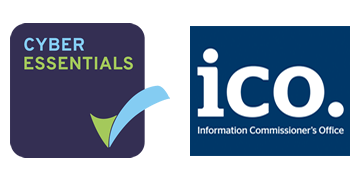Employee engagement in the higher education sector presents a unique and pressing challenge. Effective engagement directly impacts staff retention, productivity, and institutional success, particularly in a resource-constrained and dynamic environment. Understanding the specific obstacles facing higher education institutions is essential to driving meaningful improvements.
In this article, we’ll explore the most common engagement challenges within higher education and provide targeted strategies to overcome them, supported by sector research, case studies, and actionable insights.
1. Understanding Diverse Workforce Needs
Higher education institutions consist of a wide array of staff, from academic faculty and administrative professionals to technical support and facilities teams. Each group has different needs, expectations, and work environments. For instance, faculty members may prioritize research opportunities and teaching support, while administrative staff may focus on workload balance and career progression.
Solution: Tailored Recognition and Communication
Develop recognition and development programs that cater to the varied roles within the institution. According to Exude Human Capital (2024), personalised communication strategies and tailored professional development pathways boost engagement by demonstrating that each employee's contributions are valued. Cross-departmental initiatives that align with institutional values foster a sense of collective purpose and inclusivity.
2. Managing Operational Pressures and Organisational Change
Higher education institutions frequently undergo leadership transitions, curriculum updates, funding shifts, and regulatory changes. If not managed effectively, these disruptions can cause anxiety and disengagement among staff.
Solution: Transparent Change Communication Plans
Implement communication plans that clearly outline the rationale for changes, timelines, and expected impacts on staff. The University Human Resources (UHR, 2024) framework recommends using town halls, email updates, and Q&A forums to address concerns and keep staff informed. Regular, transparent communication alleviates uncertainty and builds trust, fostering alignment across teams.
Case Example:
One UK university facing a department restructure implemented bi-weekly updates and a dedicated change management microsite. According to Gallup (2024), this approach led to a 25% increase in staff trust ratings during the transition.
3. Overcoming Fragmented Communication Channels
With sprawling campuses, hybrid work arrangements, and shift patterns, communication silos are common in higher education, leading to delayed or missed messages and disengagement.
Solution: Centralised Communication Platforms
Adopt an internal communication platform that consolidates email updates, document libraries, and interactive features for feedback. A Gallup (2024) study showed that institutions using unified communication platforms experienced a 20% improvement in staff satisfaction. Mobile-friendly systems ensure all staff can access key information, regardless of location.
Linked Reading:
For more on optimising communication tools, visit: Times Higher Education.
4. Addressing Leadership Visibility and Consistency
Inconsistent messaging from leadership can erode trust and leave employees feeling disconnected from institutional goals.
Solution: Regular and Authentic Leadership Communication
Encourage leaders to deliver consistent messages through a variety of formats, such as newsletters, video messages, and in-person forums. Times Higher Education (2023) suggests incorporating leadership communication into regular updates to foster visibility and accountability. Recognising staff achievements during these updates also strengthens morale and reinforces institutional priorities.
5. Ensuring Two-Way Communication
In times of operational pressure, such as admissions periods or research grant deadlines, staff often seek reassurance and clarity through open dialogue. However, traditional one-way communication methods can stifle engagement.
Solution: Interactive Feedback Mechanisms
Implement two-way communication channels, such as pulse surveys, comment-enabled updates, and virtual discussion forums. A Nature Communications (2023) study found that institutions with robust feedback loops saw a 15% increase in employee engagement and a 10% reduction in staff turnover. By fostering continuous dialogue, institutions can respond quickly to concerns and adapt their engagement strategies accordingly.
Systemic Barriers to Engagement and Strategies for Overcoming Them
1. Securing Leadership Buy-In
Leadership support is essential for successful engagement initiatives but can be challenging to secure when competing priorities exist.
Solution: Data-Driven Business Case
Present data that demonstrates the impact of engagement on retention, productivity, and institutional reputation. Platforms with engagement analytics can showcase participation rates and the correlation with institutional success. Transparent reporting builds credibility and aligns leadership with engagement goals.
2. Promoting Inclusivity and Accessibility
Higher education institutions often struggle to reach remote, part-time, or non-desk-based staff, leading to engagement disparities.
Solution: Mobile-Friendly Platforms
Ensure communication tools and engagement programs are accessible across mobile devices and flexible formats. According to Exude Human Capital (2024), inclusive communication practices enhance equity and foster a greater sense of belonging among diverse teams.
Streamlining Internal Processes for Improved Engagement
1. Addressing Unrealistic Workloads
HR and communication teams often juggle multiple responsibilities, which can create unrealistic expectations for engagement outcomes.
Solution: Automating Routine Communication Tasks
Digital platforms can automate routine announcements and allow HR teams to focus on strategic initiatives. Collaborative tools also improve task delegation and accountability.
2. Breaking Down Departmental Silos
Disconnected departments can hinder collaboration and create communication bottlenecks.
Solution: Cross-Functional Collaboration
Use integrated communication platforms to provide visibility across departments. Creating cross-functional working groups for institutional projects can foster collaboration and ensure consistent messaging.
3. Maximising Budget Constraints
Budget limitations often restrict the scale of engagement initiatives.
Solution: ROI-Driven Engagement Tools
Prioritise platforms that provide robust ROI tracking. By demonstrating the financial and cultural benefits of engagement, institutions can justify budget allocations and secure additional funding.
Conclusion
Employee engagement in higher education is a vital component of institutional success. By addressing common challenges with targeted, data-driven strategies, institutions can foster a more engaged, motivated workforce. Leveraging insights from sector research and case studies ensures that engagement efforts are inclusive, impactful, and aligned with strategic goals.
FAQs on Employee Engagement in Higher Education
1. What are the key challenges to employee engagement in higher education?
Key challenges include diverse workforce needs, operational pressures, fragmented communication, inconsistent leadership, and limited two-way communication.
2. How can institutions tailor engagement strategies for diverse staff groups?
Institutions should implement customised communication streams and recognition programs that reflect the varying roles and priorities of academic and administrative staff.
3. What role does leadership play in improving engagement?
Leadership sets the tone for engagement. Consistent, transparent communication from institutional leaders fosters trust, alignment, and motivation.
4. How can communication silos be addressed in higher education?
Silos can be reduced by adopting centralised communication platforms that support real-time updates, document sharing, and interactive feedback.
5. Why is two-way communication important?
Two-way communication ensures that staff feel heard and valued. Feedback mechanisms allow management to address concerns promptly and refine engagement strategies.
6. How can leadership buy-in be secured for engagement initiatives?
Presenting data on engagement’s impact on retention, satisfaction, and productivity can help secure leadership support. Regular reporting reinforces accountability and alignment.
7. How can institutions overcome budget constraints for engagement programs?
Institutions can maximise limited budgets by using platforms that track engagement metrics, demonstrate ROI, and offer cost-effective communication solutions.
8. What tools can improve internal communication processes?
Mobile-friendly, centralised platforms enhance communication by reaching all staff, regardless of location or role, and by consolidating messaging and feedback mechanisms.
9. How can institutions manage change effectively?
Change management plans should include clear timelines, support resources, and consistent communication updates to reduce anxiety and promote alignment.
10. How is the success of engagement strategies measured?
Success can be measured through metrics such as participation rates, feedback responses, and staff turnover rates. Platforms that provide real-time analytics help institutions adjust strategies as needed.
References:
• Exude Human Capital (2024). Employee Engagement in Higher Education. Available at: https://exudehc.com/blog/employee-engagement-higher-ed/
• Gallup (2024). Employee Engagement Insights in Higher Education. Available at: https://www.gallup.com/education/194321/higher-education-employee-engagement.aspx
• Times Higher Education (2023). How to Engage Your Staff in Just 15 Minutes. Available at: https://www.timeshighereducation.com/campus/how-engage-your-staff-just-15-minutes
• University Human Resources (2024). Engagement Frameworks and Best Practices. Available at: https://www.uhr.ac.uk/resources/News/View?g=94fe89ed-d275-4cba-af54-f5d01c7ea21c
• Nature Communications (2023). The Impact of Communication Strategies on Academic Institutions. Available at: https://www.nature.com/articles/s41599-023-01806-8


.png?width=764&height=191&name=CTA-DGHE-A1%20800%20x%20200%20(2).png)
.gif?width=764&height=191&name=CTA-DGHE-QR%20CODE%20800%20x%20200%20(1).gif)






